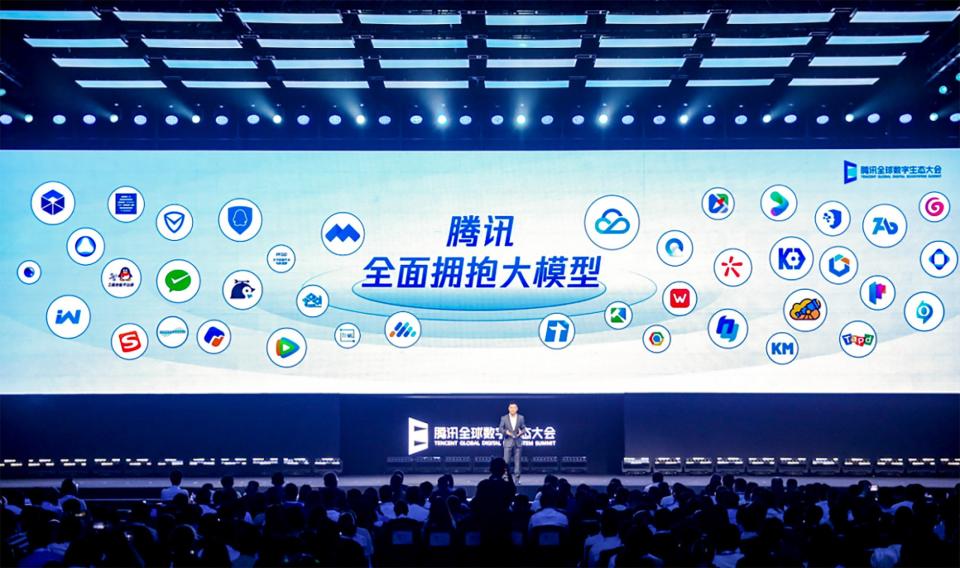Tencent's upgraded LLM for text-to-image generation released on open source platforms
Chinese video gaming and social media giant Tencent Holdings launched an upgraded version of its large language model (LLM) with text-to-image generation that is open source for enterprises and individuals.
The eight-month-old Hunyuan large language foundation model developed by Tencent underwent a major upgrade earlier this year, which enhanced its overall performance by 20 per cent compared with the previous version, according to a statement posted on Tuesday on the official WeChat account of Tencent Cloud, the company's cloud-computing services arm.
Tencent said the latest text-to-image function employs the DiT model architecture, which is also used by OpenAI's text-to-video tool Sora. The company added that its primary database is in Chinese, enabling the tool to effectively and accurately understand Chinese-language commands.
Do you have questions about the biggest topics and trends from around the world? Get the answers with SCMP Knowledge, our new platform of curated content with explainers, FAQs, analyses and infographics brought to you by our award-winning team.
The complete source code of its text-to-image LLM has been released on US open-source platforms Hugging Face and Github "to benefit the industry as a whole and build an open source ecosystem for next-generation vision generation", according to the statement.
That means both individuals and enterprises can access the program's code and modify or share its design, fix broken links, or scale up its capabilities.
Since launching Hunyuan last September, Tencent has integrated its LLM into the company's various business units, including Tencent Cloud, Tencent Games and super app WeChat. The company said the AI-powered tool has also been provided to over 20 media outlets and advertising firms to facilitate their work.
The launch of the upgraded version came a day after Microsoft-backed OpenAI unveiled its newest GPT model, GPT-4o, which is capable of natural human-computer interaction across text, image, video, and audio.
Open-source technologies have played an important role in facilitating China's ability to improve its LLMs and catch up with OpenAI's innovative generative AI tools.
Alibaba Group Holding, owner of the South China Morning Post, has also taken an aggressive move to give third-party developers access to its models after the e-commerce giant launched its self-developed Tongyi Qianwen, or Qwen, LLM last year.

Tencent launched its Hunyuan AI model during the Global Digital Ecosystem Summit in Shenzhen, September 7, 2023: Photo: Handout alt=Tencent launched its Hunyuan AI model during the Global Digital Ecosystem Summit in Shenzhen, September 7, 2023: Photo: Handout>
Alibaba Cloud, the company's cloud-computing unit, has provided access to 76 Qwen text generation models on ModelScope and Hugging Face.
It includes the 72-billion-parameter and 1.8-billion-parameter versions of its LLM. It also freely made available another model that understands audio.
Both Tencent and Alibaba reported better-than-expected profits in the first quarter of 2024.
Shenzhen-based Tencent reported a 62 per cent jump to 41.9 billion yuan (US$5.8 billion) in the first quarter, fuelled by strong advertising revenue, marking its first quarterly profit growth since last June.
Alibaba reported a 10 per cent increase in profit to 79.7 billion yuan in the financial year through to the end of March, marking its most profitable year since 2021.
This article originally appeared in the South China Morning Post (SCMP), the most authoritative voice reporting on China and Asia for more than a century. For more SCMP stories, please explore the SCMP app or visit the SCMP's Facebook and Twitter pages. Copyright © 2024 South China Morning Post Publishers Ltd. All rights reserved.
Copyright (c) 2024. South China Morning Post Publishers Ltd. All rights reserved.

 Yahoo Finance
Yahoo Finance 